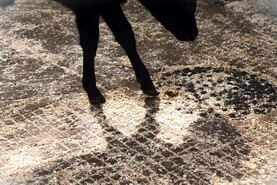New ideas on how to rear and export expanding numbers of male dairy calves are being explored by the Department of Agriculture, ICOS, farm organisations, Teagasc and exporters.
The new ideas focus on how to level out the peak supply of calves and remove bottlenecks on exports after mart prices tumbled last spring when numbers peaked.
Calf transport rules are also expected to tighten further in the future.
As it represents dairy co-ops and livestock marts, ICOS is taking a lead role. It has asked a lairage owner at Cherbourg to increase capacity for Irish calves resting on route to the Netherlands and other markets.
ICOS livestock executive Ray Doyle hopes to meet with lairage owners in the coming weeks.
Ferry
Doyle will also look at the feasibility of hiring the walk-on walk-off boat from Purcell Brothers, which could carry about 7,000 Irish calves to the continent, removing ferry and lairage bottlenecks.
Furthermore, ICOS has contacted the biggest veal producer in Holland, the Van Drie group, to propose establishing a satellite veal farm in Ireland.
Dairy farmers will also have to make changes, Doyle says, including rearing male calves for longer to level out export numbers.
“It would pay them,” Doyle says. “Last spring good calves sold for €30 at the peak – they doubled in price a few weeks later.”
Dairy farmers will have to prioritise selecting bulls and AI with reasonable amounts of beef traits, especially for their non-replacement, breeding cows, he said. They will also have to build more housing space for calves.
The Department of Agriculture is considering offering grant aid for automatic calf feeders, likely under TAMS or a welfare scheme, to help dairy farmers rear calves longer.






 This is a subscriber-only article
This is a subscriber-only article










SHARING OPTIONS: